Pending Business: Talk Radio Questionnaire
By Steve Lapa
Lapcom Communications Corp
President
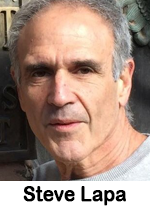 Time to thank the lawyers in the Donald Trump trial for once again proving beyond any doubt the power of talk radio.
Time to thank the lawyers in the Donald Trump trial for once again proving beyond any doubt the power of talk radio.
1. Sellers – Get ready for Mother’s Day and Christmas rolled into one.
2. Managers – Prepare a fresh new page in your talk radio media kit.
3. On-air talk radio talent – Don’t throw away that lottery ticket, your number could come in.
4. Media consultants – Hit the brakes on making TV as an automatic first choice for your political campaigns, we’ve got a story for you.
5. Owners – Play your cards right and that talk radio format may have jumped in value.
It has been widely reported that jurors selected for the Donald Trump-Stormy Daniels trial were presented a questionnaire with the following question, “Do you listen to talk radio?” “If so, which programs?” Now wait just a minute all you jury profilers out there or fans of the TV show “Bull.” This is big, but I have a few questions of my own:
1. Why would any lawyer be interested in the radio listening habits of a (potential) juror?
2. Why specify “talk radio?”
3. What’s with the need to know about specific programs?
4. What’s the definition of “listen?” Daily? How long?
Maybe it’s time to recognize just what all this means to great talk radio talent and marketers.
I’m sure by now you have figured out where this goes – influence – as in talk radio hosts, the original influencers.
The very nature of a jury selection questionnaire screening for talk radio listening and specific programs is fascinating. Did an attorney conclude that talk radio shows influenced a potential juror’s feelings, opinions, perceptions (the very currency of talk radio) when it comes to Donald Trump or Stormy Daniels or any other key player on the legal stage?
As every seller knows, talk radio talents were the original influencers and continue to drive sales every day. To the local sellers and managers in the New York DMA pitching Sid Rosenberg, Joe Piscopo, Mark Simone and the other great local talents, imagine experienced legal teams evaluating the influence of their daily shows on potential jurors. Same for the nationally syndicated talent heard in the New York DMA. Talk radio lives and is influencing in the Big Apple!
“Do you listen to talk radio?” “If so, which programs?” that line of questioning should now become part of your daily marketing testimonial. After all, if teams of well-respected lawyers feel talk radio listening can influence the decisions of jurors in one of the most historic cases ever to be tried in our country, imagine what talk radio can do for your advertisers!
Steve Lapa is the president of Lapcom Communications Corp. based in Palm Beach Gardens, FL. Lapcom is a media sales, marketing, and development consultancy. Contact Steve Lapa via email at: Steve@Lapcomventures.com.



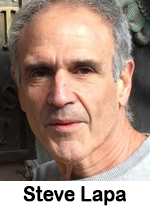 The media headlines are dizzying these days, yet they all share one common thread. See if you can solve this puzzle.
The media headlines are dizzying these days, yet they all share one common thread. See if you can solve this puzzle.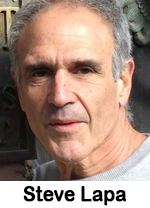 The work-life balance concept is up for a new spin. Let us start in California.
The work-life balance concept is up for a new spin. Let us start in California.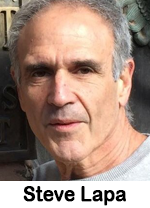 The thing about outstanding performance is there is one key trait in the performer we can all agree on. It was on full display in front of millions during the past two weeks. It shows up every time an athlete takes the game to new levels, or an artist moves us out of our seats and collective comfort zone.
The thing about outstanding performance is there is one key trait in the performer we can all agree on. It was on full display in front of millions during the past two weeks. It shows up every time an athlete takes the game to new levels, or an artist moves us out of our seats and collective comfort zone. Will video save the radio star? I hope so.
Will video save the radio star? I hope so. March is half over, and the Madness is just beginning.
March is half over, and the Madness is just beginning. Think about the concept for just a minute. Manhattan Island for $24? Peter Minuit knew value.
Think about the concept for just a minute. Manhattan Island for $24? Peter Minuit knew value. Is that host read you are pitching “baked-in?”
Is that host read you are pitching “baked-in?” Are you a sales curmudgeon? You know, that old-school, out-of-touch terrestrial radio ad sales rep who is too lazy to learn the new digital/social media sales world?
Are you a sales curmudgeon? You know, that old-school, out-of-touch terrestrial radio ad sales rep who is too lazy to learn the new digital/social media sales world? Have we passed the disappointment of 2023?
Have we passed the disappointment of 2023? Super Bowl LVIII could have been the best ever.
Super Bowl LVIII could have been the best ever. One person can make a difference.
One person can make a difference.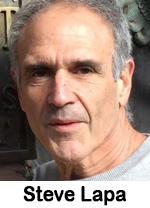 I’m no expert, but I do have a theory.
I’m no expert, but I do have a theory. Let’s talk streaming because I don’t get what is happening. Maybe you do.
Let’s talk streaming because I don’t get what is happening. Maybe you do. Let’s take a minute to welcome back an old reliable that has been part of our sales and marketing world since Adam pitched Eve and got the first “yes” on the original cold call. No telling how cold that call really was.
Let’s take a minute to welcome back an old reliable that has been part of our sales and marketing world since Adam pitched Eve and got the first “yes” on the original cold call. No telling how cold that call really was. This column should really be called, “How I got transferred from Buffalo to Tampa.” The storyline will help explain the title and offer you a proven technique that should help you sell and earn more.
This column should really be called, “How I got transferred from Buffalo to Tampa.” The storyline will help explain the title and offer you a proven technique that should help you sell and earn more. What do your New Year’s resolutions look like?
What do your New Year’s resolutions look like? It happens to everyone at least once.
It happens to everyone at least once.